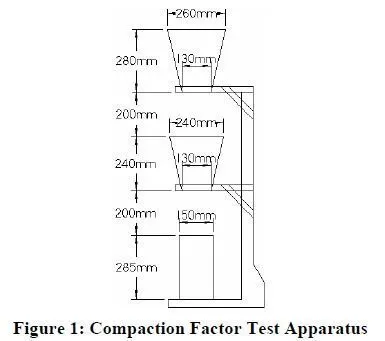The Vibropenetrator was developed by Komlos (1964) as a penetration test to measure the behavior of vibrated concrete. The device consists of a standard 20 cm cube mold mounted on a vibrating table. Concrete is placed in the mold and compacted with the assistance of the vibrating table. A rod, which is guided by a sleeve mounted to the cube mold, is placed on top of the concrete. The vibrating table is started and the time for the rod to penetrate a certain depth into the concrete is measured as an indication of workability. A ring on the rod touches the top of the sleeve to indicate the end point of the test. Komlos performed the test on moderate to highly workability concretes with water/cement ratios ranging from 0.38 to 0.90.
The Vibropenetrator test has the advantage of being a dynamic test that adds energy to the concrete. The results of the test are a function of not just the concrete properties, but also the nature of the applied vibration. Large coarse aggregates could interfere with the descent of the rod and distort test results.
Advantages:
The Vibropenetrator test is a dynamic test that measures the behavior of vibrated concrete.
The test is simple to perform and provides a direct result.
Disadvantages:
Large coarse aggregates could distort test results by interfering with the descent of the penetrating rod.
Although the test has been performed on a wide range of concrete workability, highly flowable concrete with a water cement ratio near 0.90 would likely be difficult to test with precision.
The test requires a vibrator and electricity and is not as simple as other single-point field tests.
